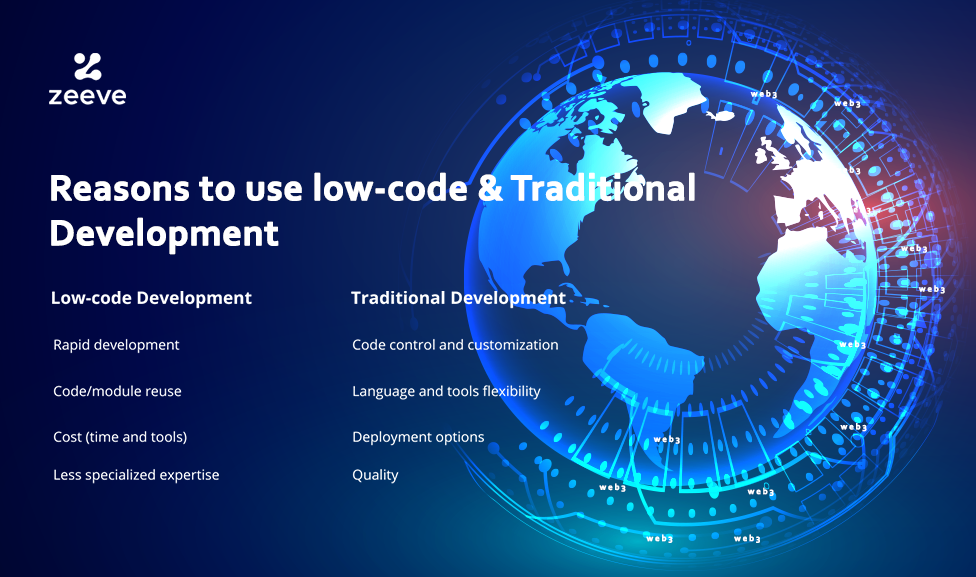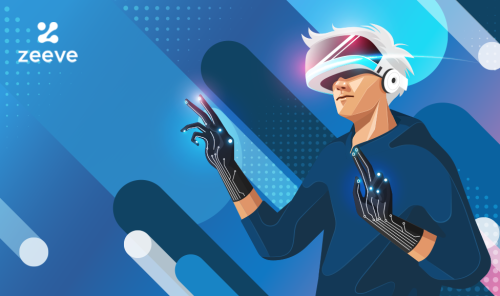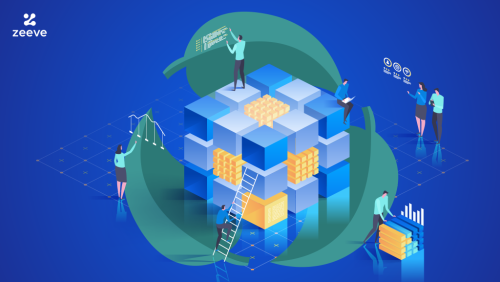
How no-code blockchain infrastructure automation platforms can drive Web3 adoption
Unless you’ve been living under a rock for the last decade, chances are, you’ve come across the term “web3”, “web3 infrastructure management” and “no code web3”. Although most people know about web3 that uses blockchain as an underlying technology, which in turn is responsible for creating one of today’s most popular crypto currencies: Bitcoin in 2008 but there is more to it than just this! In almost every major field that you can possibly name – be it banking and finances, insurance, healthcare, education, gaming, supply chain, telecom, logistics, power and energy, government, intellectual property and so on, the third iteration of web is gaining traction with its proven real-world applications but web3 adoption rate is still sluggish.
Web3 can be described as one of the most striking technology industries witnessed in the last several years. But even with all the millions of dollars it’s generated and media attention it has received, Web3 mass adoption has not been possible yet. The big question that we ask today is when will web3 ever go mainstream?
The reasons why the gap is so big has more to do with the complex nature of blockchain-based technology. Developers are expected to pick up new languages and environment systems and learn about new web3 no code tools and concepts such as cryptography, hash functions, nodes, architecture, stacks, layers of blockchain, scalability solutions, zero-knowledge proofs, proof of work, proof of stake, and more. After that, they need to also figure out how they can leverage the no code smart contract and best web3 website builder.
Even after users recognize the need for web3 adoption globally, they are yet to determine how the pieces all fit together; it’s still going to take time and effort to put in place. Web3 is slowly gaining steam, largely because of the Abstraction SDKs and APIs offered. It’s now easier and cheaper for all developers to use it. However, let’s dive deeper into the problem and also explore all relevant aspects such as evolution of web, web3 infrastructure, challenges for no code infrastructure platforms and then the critical role it plays for the web3 accelerated adoption.
Evolution of the Web
Over the past three decades, the design of the World Wide Web has moved from formless to more semi-structured, social web 2.0. With the emergence of web 3.0, the web will move from hierarchical structures and centralized control to users.
The first business model of the Web 1.0 era was called Syntactic Web, or read-only web, the (1990s-2000s) when information end users mainly read the most recent content provided on the web. There was no functionality to let users give back their own feedback to the content producers. Examples of work with the new web were static websites and personal pages.
Web 2.0, also called the Social Web or read-write web, is the era (2000-2010) during which users interacted with websites and other sites that were content producers and the content or content was shared and swapped among websites. Some popular web 2.0 applications include Facebook, YouTube, Flickr, Twitter, and others. On the client side, web technologies such as HTML5, CSS3, and Javascript frameworks like ReactJs, AngularJs, VueJs etc. allow startup ventures to launch new technological ideas stemming from an active social web.
Over the course of this decade computers became able to comprehend humans by reading data from databases and deciding how to use it. Machine Learning enables computers to receive a large amount of pre-made data and create their own data libraries that are tailored to individual users. Compared to web2.0, web 3.0 is defined by decentralization.
Web 3.0 applications are based on blockchains—networks that use many peer-to-peer nodes and also called as decentralized apps (DApps), and the term is often found in Web 3.0 environments. Peers on every single node are rewarded in order to improve the quality of service they provide to the network.
Demand for blockchain infrastructure management on the rise
Web3 is gaining momentum in various industries, including healthcare, finances, retail, education, digital identity, real estate, art and so on.
These disruptive technologies minimize the requirement for trust in business dealings. It fulfills its promise to eliminate third parties from transactions in a world where we must rely on them without first validating their legitimacy. Even though the bitcoin network was the first real-world implementation of blockchain, there are further uses for this underlying technology and web3 no code or low code has a lot of potential for numerous beneficial solutions. Worldwide, demand for no code web3 infrastructure management platforms is increasing across many sectors.
With the web3 solutions becoming increasingly popular, there is a need for companies to have a secure and reliable system in place to manage the network. As such, companies are looking for experienced no code web3 platforms or no code web3 builders that can help them manage their infrastructure needs and complex networks. This involves using an existing website or application as a base, and then adding code to it to create a web3 secure and enterprise-grade decentralized platform. This type of management system is easy to set up, and allows businesses to use existing resources to manage their networks.
Investments spurring on in web3 and no code blockchain infrastructure
With the introduction of web3, tech titans such as Facebook and Google are betting big on the web3 space, transferring billions of marketing dollars. Although there is a lot of skepticism surrounding the success and utility of web3 solutions, many start-ups and early-stage founders across the world, especially India in the web3 space have continued to garner funding support.
The web3 revolution has truly arrived in the world’s most populous region, with cryptocurrency activities booming over 700% since last year.
A new report from Business Insider shows that Asia Pacific is one of three geo-regions accounting for 60%-70 percent total market value increase globally during Q3 2018 (Japan & China). This growth can be attributed to a boom within DeFi – or debt financing using cryptocurrencies as collateral!
In fact, investors are chalking out “high capital commitment” plans for Web3 start- ups in the region. The announcement about the launch of a $10-million Web3 Discovery Fund by CoinSwitch Kuber has been big news recently. It plans to provide anywhere between $25,000-$250,000 for services, products, and infrastructure start-ups.
Several exciting deals have been finalized over the last few quarters and partnerships across gaming, infrastructure, analytics and so are gathering greater steam.
Innovation in the form of customer experience and user traction has taken centre stage for many companies recently, with funding coming from all sorts. DAO Larsen’s $5 million round was led by Nexus Venture Partners while Samudai’s 2nd edition platform raised funds through an investment group at FTX Ventures alongside Sino Global Capital & Coinbase VC too!
Challenges for web3 adoption
The global Web 3.0 blockchain market is expected to reach a value of USD 23 billion by 2028, according to the research firm IDC which tracks developments in this space.
However, the technology has to be developed further and customized before it can be widely utilized. Numerous employment opportunities relating to web3 are opening up as bigger businesses integrate the technology more and more into their operations.
Web3 adoption nevertheless, is not without challenges. Limited acceptance has been caused by several entrance barriers, including cost (both time and money), technical competence, and system integration. The intricacy of the system is the greatest difficulty since developing new applications that use it needs an in-depth understanding of a variety of fields, including distributed computing, game theory, cryptography, and computer science.
Despite its widespread usage, most people are still unclear about how web3 works. Because it’s difficult to understand technology, those who utilize it are still rare, making up a tiny portion of all software engineers globally. Often the platforms dealing with infrastructure management of web3 lack many of the tools and infrastructure that the developers require, hence making this technology look all the more complicated.
Gartner Predicts 90% of Current Enterprise Blockchain Platform Implementations Will Require Replacement and the primary reason being the way the technology is evolving, maturing and upgrading. More and more features, application or use case specific architecture changes are being done to make the technology easier to adopt. It takes a lot of time and cost for the developers and solution providers to keep pace with it.
Interoperability, user experience, talent, infrastructure, etc. has been identified as the major roadblocks impeding the growth of web3 tools. Choosing the right platform for the web3 infrastructure management is an important concern that can encourage the adoption of web3 worldwide.
Anomaly of web3 Infrastructure
The internet’s exciting innovations have created inspiring infrastructure management and service providers. Compared to web2, infrastructure management in web3 is, however, largely based on the principles of decentralization, which is anchored in integrity and transparency. Decentralised and the required infrastructure is to have distributed ownership. Web 3 has the following features:
The low-code and no-code Blockchain Infrastructure automation platforms help businesses and software developers to meet the challenges presented by blockchain, enabling them to implement the technology effortlessly and efficiently. These platforms make it much simpler to break away from the code to a degree to address the most complicated and time-consuming problems.
Reasons to go for no-code or low-code
A no-code infrastructure automation platform features intuitive design attributes, making it simple to design and deploy applications for decentralization, reducing the time to construct the application and test it while bringing down the overall expenses.
Recent studies by the Forrester analysis shows the low code and no code automation platforms to get a tremendous boost with annual growth to be predicted to around 40%. The growth of industry is slated to come on the close heels of spending growth, which projected to reach $21.2 billion by the year end.
With the help of no and low code automation platforms, enterprises can deploy military-grade private, public and hybrid blockchain nodes with great ease and can also manage their infrastructure. This also helps in accelerating the greater global adoption of web3.
The reports by Gartner showed a growth in the usage of no code and low automation technology by almost 23%. It has achieved high degree of success in resolving problems pertaining to enhancing customer experiences, employee satisfaction, digitizing the workflows and also adding to the effectiveness of the commercial and operational teams.
According to Harvard Business Review, low-code/no-code platforms have progressed in allowing businesses to automate and create new software without coding. Moreover, it is noted that the low-code no- code platforms simplify litigation of low-development and software engineering skills.

No-code platforms critical role play in web3’s growth
Decentralized applications (dApps) are difficult to understand to set up and install. Whether deploying a blockchain network via industry-specific enhancements such as Hyperledger Fabric or extracting data from public ledgers to run a query, it’s a difficult and slow process even with the use of web3 infrastructure automation platforms.
The cost of maintaining and administering a statistical web3 operating system is more than double the TCO of deploying, managing, and monitoring one. This is exacerbated further as the amount of DevOps skills available on the marketplace to deploy, monitor, and utilize web3 technologies is significantly less than that used with legacy technologies.
Benefits of low-code automation platforms
There are many benefits to using low-code automation platforms in your business. These platforms allow you to create automated processes and systems quickly and easily, saving you time and money. They can also help you improve communication and collaboration between team members, making it easier for everyone to work together effectively. Additionally, low-code automation platforms can help you reduce the risk of human error, improving the quality of your products or services.
A no-code infrastructure automation platform provides benefits for web3 or blockchain networks. Blockchain technology is developing slowly, but these types of platforms are permitting new businesses and startups to make significant strides with regard to web3 adoption. The adoption of digital transformation in the early cloud and low-code environments incentivized corporations towards no-code infrastructure development in the 90s.
Future prospects for no code and low code
Professionals today need to learn how to adapt to changing technologies and business practices due to rapid changes in today’s world. In addition, they must maintain and update their skills to remain productive and successful. No-code low-code automation reinforces a new understanding of how to work and think like leaders. No Code generation is making progress toward filling the world’s productivity gap. We cannot deny that it is now easier to speedily automate software tests without incorporating code automation technology. Today’s professionals have learned to navigate different systems and programs without coding platforms, identifying and resolving issues with much more immediate and comprehensive solutions.
Zeeve as a low-code automation platform
Zeeve is a leading enterprise-grade, low-code blockchain infrastructure management platform that provides fully automated deployments of nodes at the fastest speed possible without compromising on security and also cost. We provide proactive monitoring and analytical dashboard for both cloud and Blockchain resources. Developers can also get plug-n-play services to build the dApps faster. We’re faster than competitors in 65% of locations globally. We’ve got robust APIs to create DApps for several purposes. So let’s interact to know more about our company. You can reach us by means on Twitter and Telegram.






Responses